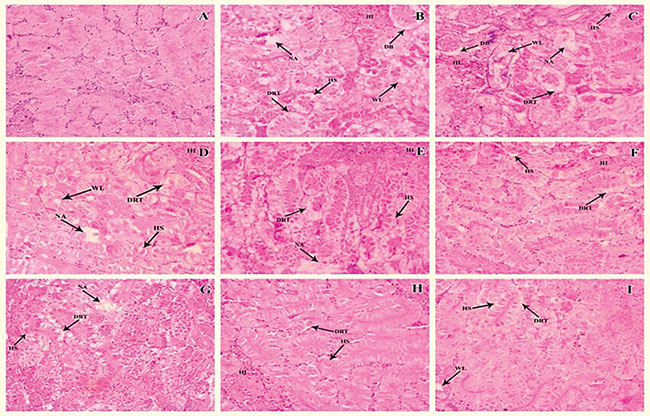
News & Views
Research
Oxolinic acid effective against Aeromonas hydrophila infection in Nile tilapia
February 29, 2024 By Ruby Gonzalez
 Histoarchitecture of the kidney tissues of Aeromonas hydrophila challenged Oreochromis niloticus
Photo: TJ Abraham, Aquaculture Studies
Histoarchitecture of the kidney tissues of Aeromonas hydrophila challenged Oreochromis niloticus
Photo: TJ Abraham, Aquaculture Studies With high mortality in tilapia traced to bacterial diseases, effective management is important, especially in terms of bottom line and production growth.
A study in India, where tilapia is a top aquaculture product, demonstrated the efficacy of Oxolinic acid (OA) in Aeromonas hydrophila-infected Nile tilapia (Oreochromis niloticus) juvenile.
“OA treatment yielded better consequences in terms of increased feed intake and biomass and decreased plasma biochemical parameters, histopathological changes and improved recovery from A. hydrophila infection compared to the untreated group. Wounds of the OA-treated group healed at a faster rate, with complete healing within 12 days post-injection, while the wounds of the untreated group took longer to heal,” said authors Patel et al.
The group with untreated feed took longer to heal.
Aeromonas hydrophila is the most common cause of motile Aeromonas septicemia (MAS), which is among the leading causes of bacterial diseases in the species.
The environment in intensive farming is conducive to the spread of bacterial infections.
In the experiment, fish challenged with the bacterium showed, among others, initial signs of lethargy, resting at the bottom and vertical swimming. Inflammation and hemorrhages developed in the area where the injection was administered.
Within 24 hours post-injection, the fish condition worsened to “tissue reddening, inflammation and skin peeling at the site of injection became evident, along with the appearance of open sub-epithelial wounds.”
Upon application of OA therapy, conditions began improving, with gradual decrease in reddening and inflammation. Complete wound closure was observed within 12 days post-injection.
As effective as OA has been proven in the bacterial treatment in Nile tilapia, the study advised prudence in its usage because of its classification as a “critically important medicine for humans.”
Following the recommendation of the World Organization for Animal Health, the study stressed that OA administration against A. hydrophila infection should only be used as a second-line treatment choice when no other alternatives are available.
Print this page
Advertisement
- From the Editor: The genetics edition
- AISP provides reduced rate for farmers to attend Aqua Farm 2024





